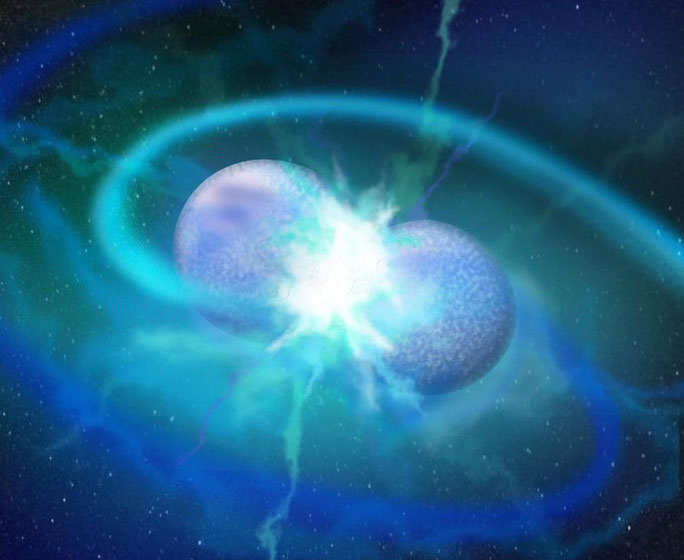German and Argentine scientists have identified a bizarre and powerful new type of star, covered in helium-burning ash. More disturbingly, this cosmic monster is born from the remnants of two dead stars.
According to SciTech Daily, a research team from the University of Tübingen and the University of Potsdam (Germany) utilized spectra collected by the Large Binocular Telescope (located in Arizona, USA) and the LAMOST Telescope (located in Sichuan, China) to identify these cosmic monsters, which are completely distinct from anything previously observed. They are stars cloaked in ash.

Two white dwarfs colliding – (Photo: Nicole Reindl).
While normal stars have surfaces composed of hydrogen and helium, these peculiar stars have surfaces made entirely of carbon and oxygen, which is a form of ash produced from the helium-burning process.
The objects become even more puzzling as their temperature and radius suggest that they are still actively burning helium in their cores. The hypothesis that they are dying stars that have exhausted helium in their cores and are on the verge of becoming white dwarfs has been dismissed.
The research was published in the Monthly Notices of the Royal Astronomical Society, and a second paper in the same journal provided further insights.
This study comes from the University of La Plata (Argentina) and the Max Planck Institute for Astrophysics (Germany). “We believe that the stars discovered by our German colleagues may form during the very rare event of white dwarf mergers,” explained lead author Miller Bertolami.
White dwarfs are the remnants of stars that have exhausted their energy and collapsed. They can be considered the corpses of stars, but they are not entirely dead; they operate like zombies in the universe, occasionally detected interacting with other objects.
The new type of ash-cloaked star, which is difficult to name, is born when two white dwarfs collide—a catastrophic event that certainly produces an object of “monstrous” proportions.
However, scientists believe they still need to create more sophisticated models and gather additional data to clearly define and understand how these cosmic monsters come into existence and their roles in the cosmic environment.


















































